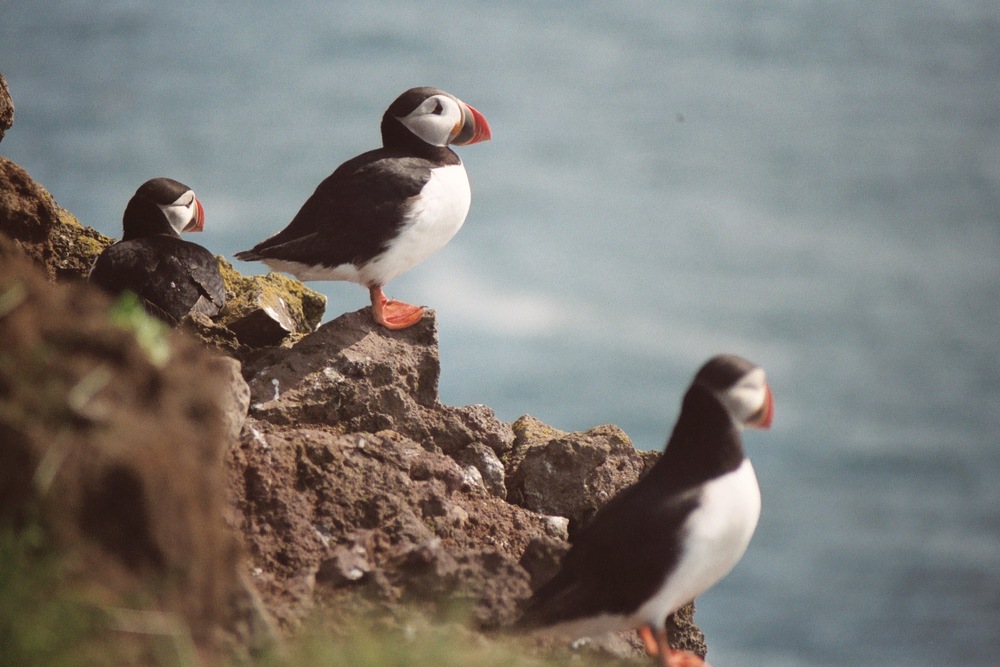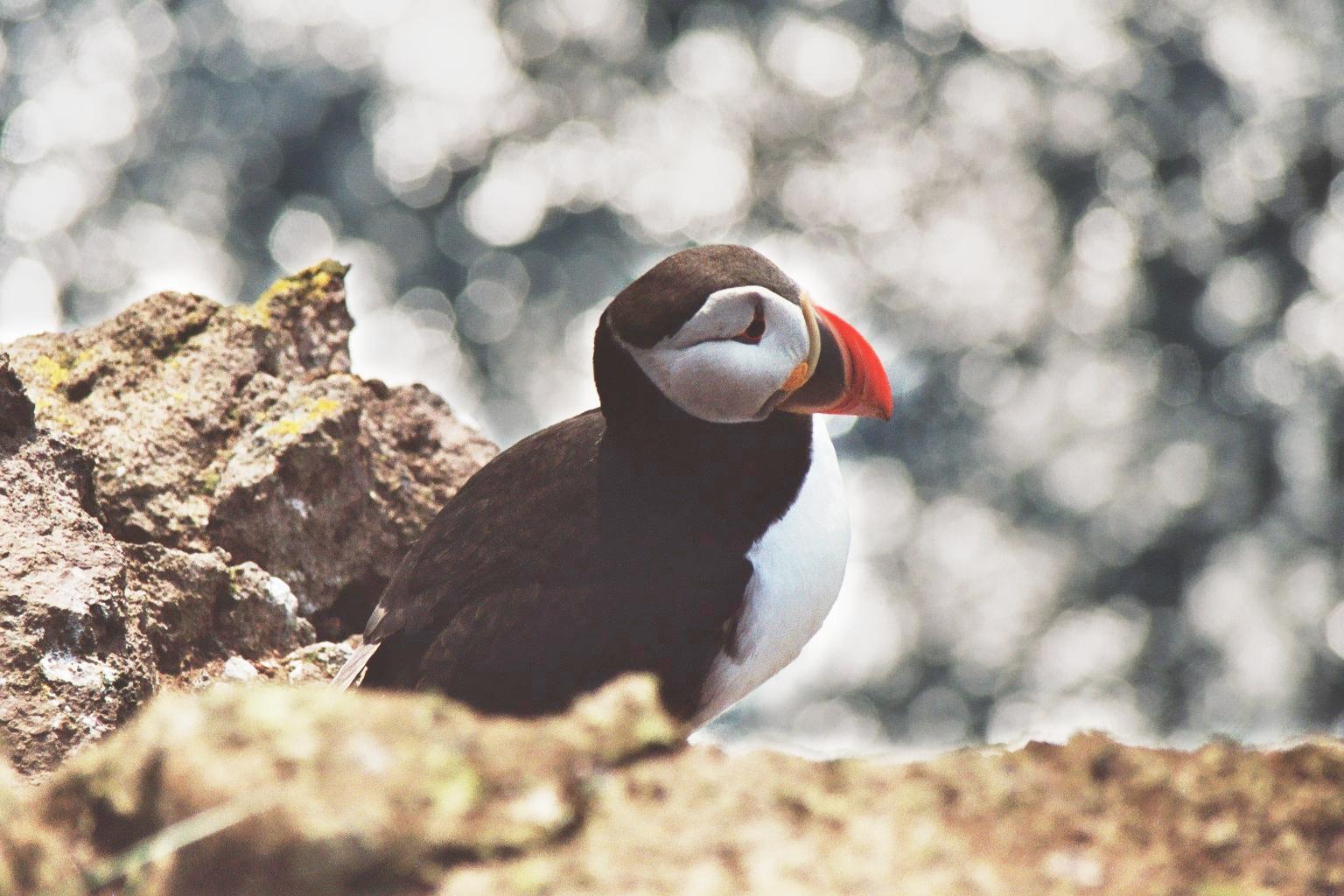Its zoological name, Fratercula arctica meaning “little Arctic brother” in Latin, indicates that it is part of the auk bird family which also includes penguins and guillemots. The puffin is a small, round bird around 30cm high with a wingspan of 60cm. Easily recognisable thanks to its coloured beak and its webbed feet (although it prefers to fly rather than swim), the puffin appears as though shrouded in a black cape, with white feathers around its eyes, as well as on its cheeks and breast.
The species has had a tumultuous past, and its survival has never been assured. In 1900, between 10,000 and 15,000 individuals were counted in the Sept-Iles area, up to the French island of Houat. They were hunted for their meat and their eggs by the local population until the 19th century, and they were also targets for rich poachers from further afield. In June 1911 M. Loiseau reported, “The puffin colony on the Isle of Rouzic has been decimated. The island looks like the site of a massacre. We found dead chicks in holes, as well as abandoned and rotten eggs; we found only one sitting female and one adult bird with a chick between 8 and 10 days old. Sailors have told us that eight days earlier two or three people arrived on the island from Paris with a 60kg box of cartridges. They only left the island once they had fired the lot at these harmless birds, who were killed as they returned to their nests with food for their young. The bodies of the victims (nearly 300 we’re told) were taken back to Perros and thrown onto the beach. Proud of their achievement, these gentleman (!) poachers only took one or two examples away with them. We’re told these vandals repeat these pointless and idiotic massacres every year. (…)”. You can read a report written by a poacher of this kind in an article that appeared in La chasse illustré from 7th May 1881.
Puffin poaching is not unique to Brittany. It was also practiced in Iceland and on the Faroe Islands. But it was this particular episode that led to the creation of the Ligue pour la Protection des Oiseaux (LPO) in 1912, as well as the establishment of a private ornithological nature reserve by the same group. The establishment of these ornithological institutions also led to the Sept-Iles archipelago being classified as a national nature reserve in 1976.

Today, although they are still protected, Atlantic puffin numbers are decreasing. The LPO’s conservation centre on Ile-Grande (Pleumeur-Bodoù) only counted 130 couples on Rouzic in 2016. And this is the only island in which they can still be found. There were more than 8,000 in the 1950s. Multiple oils spills around the Brittany coast over the years as well as climate change are two of the main reasons for this decrease in numbers. As temperatures rise, fish stocks migrate and the birds must travel further and further to find food, leaving them exhausted. Despite a life expectancy of up to 25 years, numbers are also weakened by the fact that the species lay just one egg a year between the end of April and May. What’s more, puffins are ground nesting birds and are often the victims of rats which have infested the islands, as well as seagulls, whose numbers have increased due to the presence of open-air landfills. These scavengers attack the juveniles while their parents are away fishing for sprat.
Light pollution along the coast also disturbs the chicks, who become disorientated on their first flight, heading for the lights instead of out to sea to learn to hunt. In Iceland this problem has given rise to a new tradition. Children go out to look for lost puffins which they collect in boxes to save them from certain death, before releasing them the following day.
Translation: Tilly O’Neill


